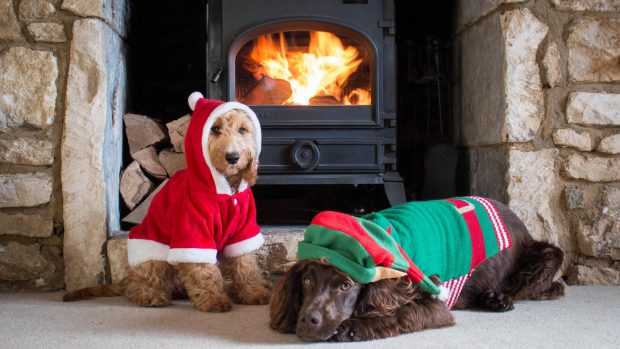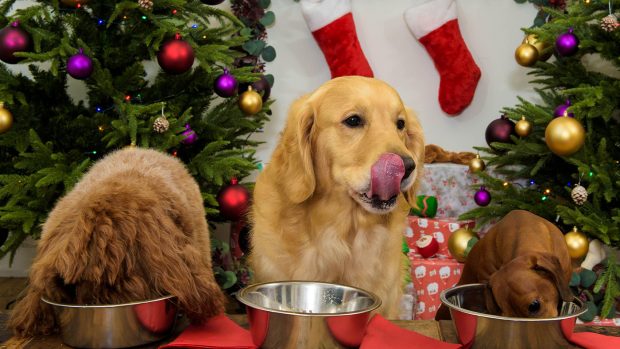The Irish Wolfhound is a giant breed known for its impressive size, strength, and gentle nature. It is the tallest of all the hound breeds, yet is graceful – with power, speed and courage. Bred to be a big-game hunter able to dispatch a wolf, these sighthounds are both serene and gentle in disposition.
Despite their formidable appearance, Irish Wolfhounds are renowned for their calm temperament and are often described as gentle giants. They are characterised by a muscular build, a rough and wiry coat, and a distinctive appearance with a large head and long legs. The slightly smaller deerhound is very similar in type.
Originating from Ireland, these hounds were bred as guardians of both people and flocks. They were historically used in war and hunting, specifically for their ability to bring down wolves – as well as boars, deer and elks. They would also accompany Celtic warriors in battle, where their huge size meant they were able to drag men off their horses. Despite the hunting and protective roles for which they were bred, modern Irish Wolfhounds are gentle, peaceful and make wonderful domestic pets. They are known for their loyalty, patience, and affectionate nature, making them good with children and other animals. However, they do require careful handling and training, due to their massive size.

An Irish Wolfhound puppy
Irish Wolfhound breed: fact file
Kennel Club breed group: hound
Size: large (featured in our list of the largest dog breeds)
Daily exercise: more than two hours
Coat: medium, shedding. Originally the Irish Wolfhound had either a rough or smooth coat, but only the rough-coated variety exists nowadays
Colours: 12 standard colours, such as black, cream, fawn, grey, and red – with brindled varieties. Dark eyes.
Lifespan: less than 10 years.
Bark: not very vocal, and certainly not a natural watchdog. However, their bark can be loud when they use it.
History: long ago, it is believed that Phoenician sailors brought greyhounds from the Middle East to Ireland, which were crossed with local mastiffs. This produced jumbo-sized dogs who had both the speed and the strength to chase away the wolves that menaced the Irish livestock population. Once the wolf became extinct in Ireland towards the end of the 18th century, there was little need for the breed, whose numbers were decimated. It was, however, revived by a Scotsman, who developed a breeding programme. It is still classified a vulnerable native breed.
Distinctive features: its height. The Irish Wolfhound is very tall, and gives the impression of strength, symmetry and muscularity – with grace. They move with both power and elegance, with an easy, active stride.
Temperament: gentle, kind and friendly.
Things to consider: as the Irish Wolfhound is such a tall hound, it should be given one of the best puppy food for large breeds to allow it to develop correctly. It will also benefit from one of the best large dog beds to give him ample space to stretch and snooze.
Training: as Wolfhounds take a long time to mature, they should be trained gently in the first 18 months with no forced exercise. They should however be socialised and taken to puppy training classes, because due to their size they can fairly destructive and prone to injuring themselves. Fast learners, with innate intelligence and a desire to please.

Irish Wolfhound Bible | Amazon
This book will give you everything you need to know about this gentle giant, from choosing the one for you to health and training tips.
You may also enjoy reading…

Meet 7 of the largest dog breeds on the planet

All about the deerhound

Stretch and snooze: the best beds for large dogs

Best puppy foods for large breeds

Did you know: a hound is a dog, but not all dogs are hounds

Subscribe to Horse & Hound magazine today – and enjoy unlimited website access all year round
Horse & Hound magazine, out every Thursday, is packed with all the latest news and reports, as well as interviews, specials, nostalgia, vet and training advice. Find how you can enjoy the magazine delivered to your door every week, plus options to upgrade your subscription to access our online service that brings you breaking news and reports as well as other benefits.




